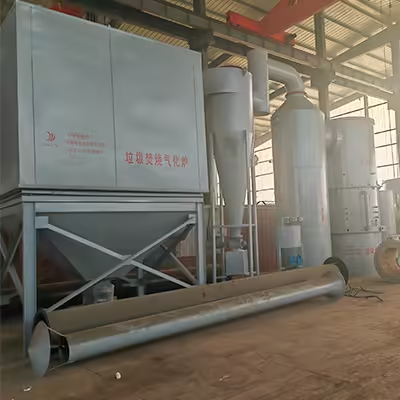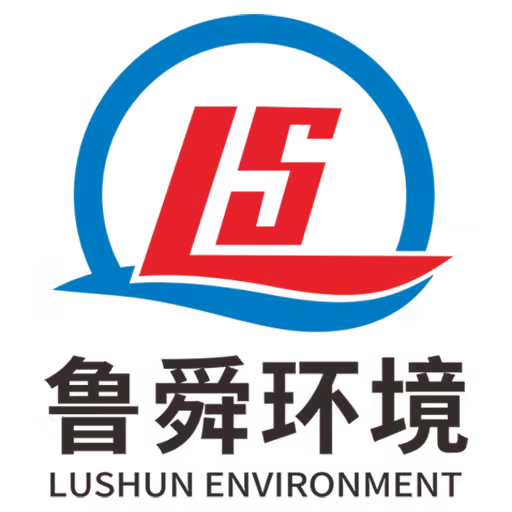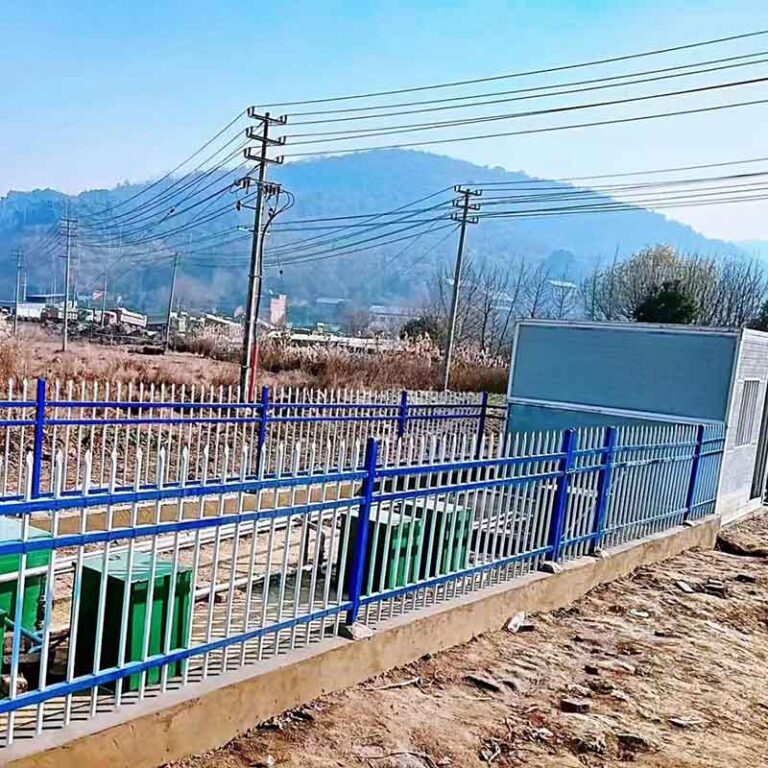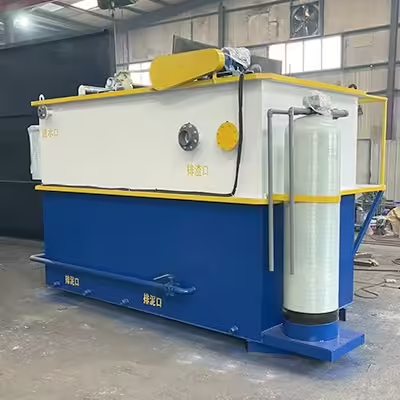Table of Contents
Introduction
The recent updates to hazardous waste incinerator regulations are reshaping the waste disposal landscape for industries worldwide. As companies like Shandong Lushun Environmental Technology Co., Ltd. continue to innovate in environmental protection technology, understanding the implications of these regulations is critical for operations in industries such as steel manufacturing, medical waste management, and general industrial operations.
The evolving regulations impact everything from operational efficiency to compliance costs and environmental responsibility. As a leading environmental protection technology enterprise, Shandong Lushun is committed to helping industries navigate these changes with advanced solutions like Medical Waste Incinerators and Industrial Incinerators, ensuring safe and efficient waste management.
In this blog, we will explore how the new hazardous waste incinerator regulations impact your operations, how industries are adapting, and how Shandong Lushun’s products can help your company stay compliant while improving operational efficiency.
1. How New Hazardous Waste Incinerator Regulations Affect Steel Manufacturing

Steel manufacturing is one of the most intensive industries in terms of waste production, generating large amounts of industrial waste, much of which is categorized as hazardous. The introduction of stricter hazardous waste incinerator regulations presents a significant challenge to companies that need to ensure their incineration systems comply with the updated rules. These regulations are intended to improve environmental sustainability, but they also require careful management of both costs and operational efficiency.
Regulation Compliance
For steel companies, meeting the new hazardous waste incinerator regulations is no longer optional. New rules demand that steel manufacturers ensure their incinerators meet stricter emission standards, particularly regarding the treatment of hazardous chemicals and metals. This affects various aspects of their operations:
- Emission Control: Emission limits have become more stringent, targeting pollutants such as dioxins, furans, and heavy metals that can be released during the incineration process. Steel manufacturers must now install additional filtering systems to meet these requirements.
- Air Quality: The new standards emphasize improving air quality around industrial plants. This means that companies must not only control emissions during incineration but also monitor and report air quality regularly.
These regulatory changes can influence the overall operational process, increasing the complexity of waste management systems in steel plants. However, compliance is crucial to avoid penalties, and it can also have a positive impact on the company’s reputation by showcasing their commitment to environmental protection.
Operational Costs
While complying with new hazardous waste incinerator regulations requires initial investment in upgraded systems, the long-term benefits often outweigh these costs. Upgrading incinerators may involve purchasing new equipment, enhancing existing systems, and training staff to ensure correct operation. The upfront costs may seem high, but there are significant advantages in the long run:
- Energy Efficiency: New regulations encourage companies to adopt more energy-efficient incinerators. These incinerators can convert more of the waste into usable energy, which not only reduces operational costs but also creates a more sustainable system.
- Reduced Liability: Compliance with regulations minimizes the risk of fines and legal trouble, safeguarding the company’s financial stability. Non-compliance could lead to costly penalties and damage to the brand.
Shandong Lushun Environmental Technology Co., Ltd. provides a wide range of industrial incinerators that meet the latest hazardous waste regulations, ensuring your company remains compliant and operates efficiently. Our solutions are designed to enhance both productivity and environmental responsibility.t.
2. The Role of Hazardous Waste Incinerators in Medical Waste Disposal

Medical waste disposal is a critical challenge in the healthcare sector, as it involves potentially dangerous materials such as needles, chemicals, and contaminated materials. With the tightening of hazardous waste incinerator regulations, healthcare providers must ensure that their waste management systems are upgraded to meet the new standards, ensuring both safety and efficiency.
High Temperature Control
The new hazardous waste incinerator regulations for medical waste require that incinerators achieve higher temperatures for extended periods to guarantee that pathogens and harmful chemicals are completely destroyed. Medical waste can contain viruses, bacteria, and other infectious agents that require thermal oxidation at high temperatures to neutralize them.
- Complete Destruction: Regulations dictate precise temperature control to ensure that waste is burned at a temperature high enough to destroy pathogens completely. This typically ranges from 850°C to 1200°C.
- Safety and Hygiene: Higher temperatures also ensure that the medical waste is not only destroyed but also sterilized, making it safe for disposal without posing any additional health risks.
Emissions Control
Alongside temperature control, advanced emissions control systems are becoming increasingly important in the medical waste incineration process. New regulations require the installation of scrubbers, filters, and other air-pollution control technologies to minimize the release of harmful gases into the atmosphere. These systems ensure that pollutants such as dioxins, furans, and other toxic substances are captured and neutralized before being released into the environment.
Shandong Lushun’s Medical Waste Incinerators are designed to meet these updated standards, featuring advanced emission control systems that not only neutralize harmful pathogens but also minimize environmental impact. Our incinerators ensure that medical waste is safely and effectively disposed of, while helping healthcare providers meet the stringent environmental guidelines.
3. The Environmental Impact of Hazardous Waste Incinerators
In recent years, there has been a growing emphasis on reducing the environmental footprint of industrial processes, particularly in waste management. Hazardous waste incinerators, when properly regulated, can play a key role in reducing pollution, but they must adhere to strict environmental standards.
Emission Reduction
One of the most significant aspects of the new hazardous waste incinerator regulations is the focus on emissions reduction. These regulations require incinerators to be equipped with advanced air pollution control technologies, such as flue gas scrubbers, filters, and catalytic converters. These technologies significantly reduce the amount of toxic gases released into the air, which is a crucial aspect of making industrial operations more environmentally friendly.
- Pollutants: The new standards target the reduction of hazardous pollutants like dioxins, furans, and particulate matter that can harm the environment and human health. By integrating cutting-edge emission control technologies, hazardous waste incinerators can significantly cut down the release of these pollutants.
Sustainability
Compliance with hazardous waste incinerator regulations also promotes sustainability by encouraging the development of energy-efficient systems. Many modern incinerators are designed to convert the heat produced during the combustion process into usable energy. This transformation not only reduces the need for additional energy sources but also helps to decrease the overall carbon footprint of industrial operations.
- Waste-to-Energy Systems: The new regulations are driving innovation in waste-to-energy technology, which allows industries to use the energy generated from burning hazardous waste to power their facilities or feed back into the grid.
By adopting Shandong Lushun’s eco-friendly incineration solutions, businesses can significantly reduce their environmental impact while adhering to the new regulatory standards. Our technologies are designed to help industries achieve higher sustainability goals while improving operational efficiency.
4. Key Considerations for Upgrading Hazardous Waste Incinerators

As industries face stricter regulations on hazardous waste management, upgrading or replacing old incineration systems is becoming a priority. Here are some critical considerations for companies looking to upgrade their hazardous waste incinerators:
Regulatory Compliance
The primary reason for upgrading your incineration system is to ensure compliance with new environmental regulations. Regulations now focus on a variety of factors, including:
- Emissions Control: New incinerators must meet higher standards for emissions, so businesses should prioritize models that integrate advanced filtration systems and scrubbers.
- Temperature Control: Many incinerators now require higher temperatures to meet the regulations, ensuring more complete combustion of hazardous materials.
Technology Integration
In addition to regulatory compliance, companies should consider how well new incinerators integrate with existing waste management and environmental control systems. Technology integration is essential to ensure smooth operations and efficient compliance with updated regulations. Key points include:
- Emission Control Integration: New systems should be compatible with current scrubbers, filters, and monitoring equipment.
- Waste Volume Reduction: Many modern incinerators offer high-efficiency waste reduction, helping businesses reduce disposal costs and manage waste more effectively.
Shandong Lushun offers advanced incineration systems for both medical and industrial waste that are equipped with the latest technologies for seamless integration into existing systems. Our incinerators are specifically designed to meet the highest regulatory standards, ensuring compliance and enhancing operational efficiency. seamless integration into your operations, ensuring you meet all regulatory requirements.
5. How New Hazardous Waste Incinerator Regulations Influence Operational Efficiency
The updated hazardous waste incinerator regulations not only impact compliance but also improve operational efficiency across industries.
- Energy Efficiency: New regulations are pushing for more energy-efficient incineration systems, which can lower operational costs over time.
- Waste Reduction: Advanced incinerators now reduce waste volumes by up to 90%, easing the burden on landfills and reducing transportation costs.
Shandong Lushun‘s innovative waste incinerators, such as the Medical Waste Incinerator and Industrial Incinerator, provide high thermal efficiency while adhering to the most stringent environmental regulations, enabling businesses to enhance both efficiency and compliance.
6. Emission Control Capabilities in Hazardous Waste Incinerators
Emission control is one of the most critical aspects of hazardous waste incineration. The new regulations have put pressure on industries to ensure that their incinerators meet specific air quality standards.
- Flue Gas Purification: Modern incinerators are now required to incorporate advanced flue gas purification technologies to reduce pollutants like dioxins and furans.
- Regulatory Monitoring: Continuous emissions monitoring is now a standard practice to ensure that all discharges are within legal limits.
At Shandong Lushun, we offer incinerators equipped with cutting-edge emission control systems that ensure compliance with the toughest regulations, reducing environmental pollution and contributing to cleaner air.
Table: Comparison of Incinerator Features by Type
| Feature | Medical Waste Incinerator | Industrial Waste Incinerator | Steel Waste Incinerator |
|---|---|---|---|
| Operating Temperature | 850°C – 1200°C | 800°C – 1200°C | 800°C – 1200°C |
| Emission Control | Yes | Yes | Yes |
| Waste Volume Reduction | 90% | 90% | 90% |
| Energy Efficiency | High | High | High |
| Pathogen Neutralization | Yes | No | No |
| Chemical Detoxification | Yes | Yes | Yes |
| Scrubber Integration | Optional | Optional | Optional |
7. Why You Should Invest in Upgrading Your Hazardous Waste Incinerator
With the new hazardous waste incinerator regulations in place, upgrading your incinerator system is no longer optional. Here’s why:
- Avoiding Penalties: Non-compliance with new regulations can lead to hefty fines and legal consequences.
- Improved Operational Safety: New systems are safer, more reliable, and better at controlling hazardous emissions.
- Sustainability: Upgrading to modern incinerators can help reduce your company’s carbon footprint and contribute to sustainability goals.
Shandong Lushun Environmental Technology Co., Ltd. offers a variety of advanced incineration solutions, including medical waste incinerators and industrial incinerators, designed to meet these new regulatory standards. By upgrading, you not only ensure compliance but also improve operational performance.
Conclusion
In light of the new hazardous waste incinerator regulations, businesses in industries such as steel manufacturing, medical waste disposal, and general industrial operations need to adapt quickly. Upgrading to advanced, environmentally-friendly incinerators that comply with these regulations is essential for ensuring both regulatory compliance and operational efficiency.
At Shandong Lushun Environmental Technology Co., Ltd., we offer high-quality waste incinerators designed to meet the latest hazardous waste disposal regulations. With a commitment to environmental protection and technological innovation, our products provide solutions that help you reduce emissions, lower costs, and meet stringent environmental standards.
If you need more information about our products or would like to receive a quote, please feel free to contact us today. Our team is ready to assist you with your hazardous waste management needs.
FAQ
Q1: What is the ideal temperature for hazardous waste incinerators?
A1: Hazardous waste incinerators typically operate between 800°C and 1200°C, depending on the type of waste being processed. Higher temperatures ensure complete combustion and neutralization of harmful compounds.
Q2: How do Shandong Lushun’s incinerators help with compliance?
A2: Our incinerators are designed to meet the latest hazardous waste incinerator regulations, including advanced emission controls and high efficiency, ensuring that your operations comply with environmental standards.
Q3: Can I integrate Shandong Lushun’s incinerators with my existing waste management systems?
A3: Yes, our incinerators are designed to integrate seamlessly with existing waste management and emission control systems, providing a cost-effective solution for compliance and efficiency.
Q4: How much can I reduce waste volume with Shandong Lushun’s incinerators?
A4: Our incinerators can reduce waste volumes by up to 90%, helping your company save on disposal costs and minimize the environmental impact of waste disposal.






